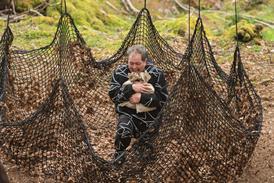The file-based system used by the P2 cameras will fit into the Reuters workflow, in which news cameramen usually send images they have captured in the field directly to Reuters HQ.
Reuters global head of visuals development Robert Kernot said: “Our cameramen [currently] shoot material in the field, then firewire it into a laptop before sending it to us.
"Although we are not an entirely MXF [Material eXchange Format] based organisation, we have been moving in that direction and capturing information using a memory card takes us closer to this.”
Reuters decided to adopt P2 because of characteristics that include SD/HD switching, interchangeable lenses, the -ability to interface with existing equipment and a manageable workflow. Several cameras from various manufacturers were trialled over an 18-month period.
The AJHPX2100 cameras, which have a list price of around£24,000, will now be put through a test period of about three months by a senior London-based cameraman. During this time, a standard camera set-up and workflow will be created.
Kernot said the test period would give Reuters a chance to “iron out any hiccups in the migration from tape to file-based capture”. The company will phase out its Panasonic DVCPro cameras, which it bought in 1998.
Reuters has not yet decided which editing equipment it will use with the P2, although the larger bureaux currently use Avid News Cutter XP.
Broadcasters using footage from Reuters World News Gathering Service, to which the bureaux contribute, include ITN, the BBC and NBC.

























No comments yet